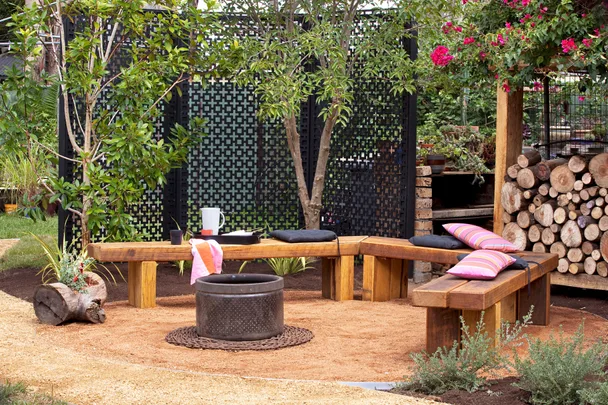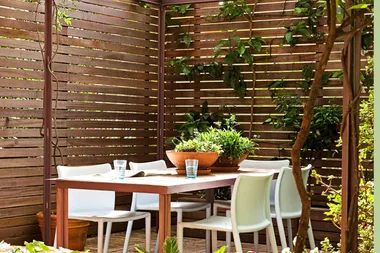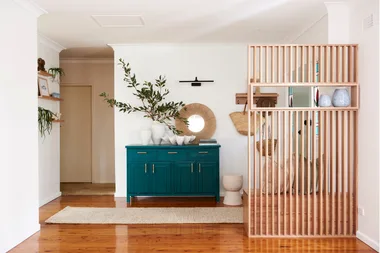Creating a liveable outdoor space is at the top of many homeowners’ to-do lists. But once they’ve achieved that goal and are spending more time in their barbecue area, outdoor dining space or living room, they may find that their neighbours are just a little too close for comfort.
There are many ways to improve the privacy in your backyard. Planting fast-growing clumping bamboo, a vertical garden, an affordable green wall or even constructing a breeze-block wall are all great solutions.
But one of the cheapest and quickest ways to establish privacy is to install an outdoor privacy screen. Using off-the-shelf panels, you can add a privacy screen to freestanding posts in a corner of your year, or install posts to screen off the side of a patio or verandah.

What you’ll need
- Posts 3000 x 90 x 90mm H4 treated pine
- Rails 90 x 45mm treated pine
- Plastic panel screens (here, 1205 x 2410mm)
- Set-out paint
- Post hole digger
- Post leveller
- Quick-set concrete
- Stringline
- 10mm plastic packers
- Power saw
- Nail gun and nails
- Painting tools
- Drill and bits
- Water-based exterior paint in a colour of your choice
- 40mm treated pine screws
7 steps to install a privacy screen
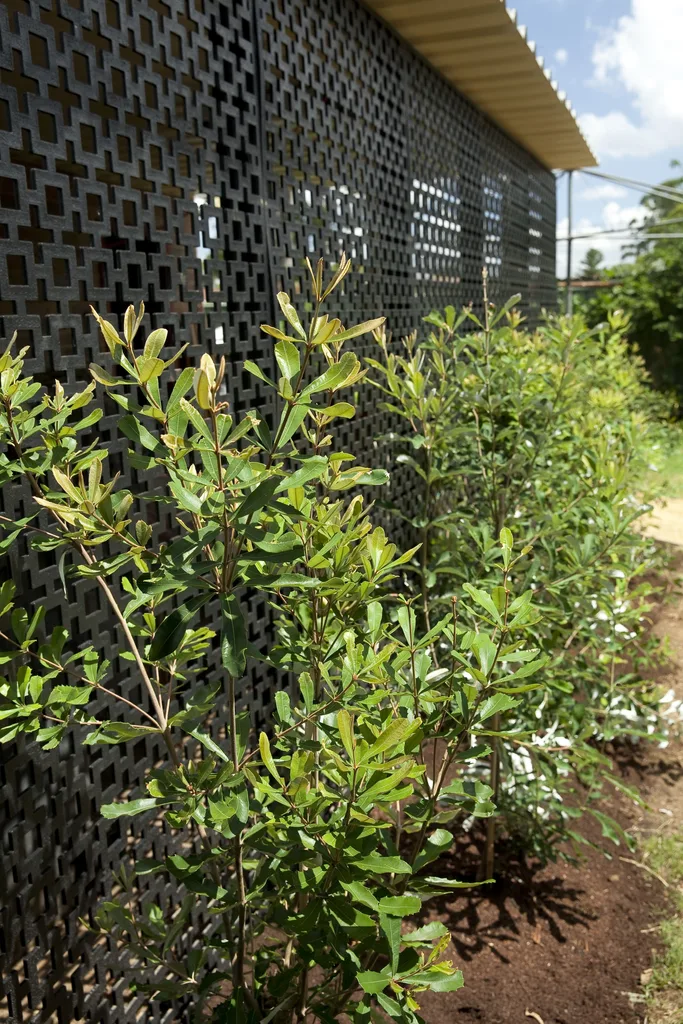
Step 1
Decide on location and length of your screen. Lay out plastic panels side-by-side and set out end posts. End posts need to be flush with outside edges of end panels. Using post hole digger, dig 500mm-deep holes in each end position.
Step 2
Place 1 end of 1 post into 1 end hole. Strap post leveller to post and ensure bubbles on both sides sit evenly between lines. This means post is plumb in both directions. With a helper holding post in position, pour water and concrete into hole and mix, following product instructions. Check again for plumb and leave to set. Repeat for other end post.
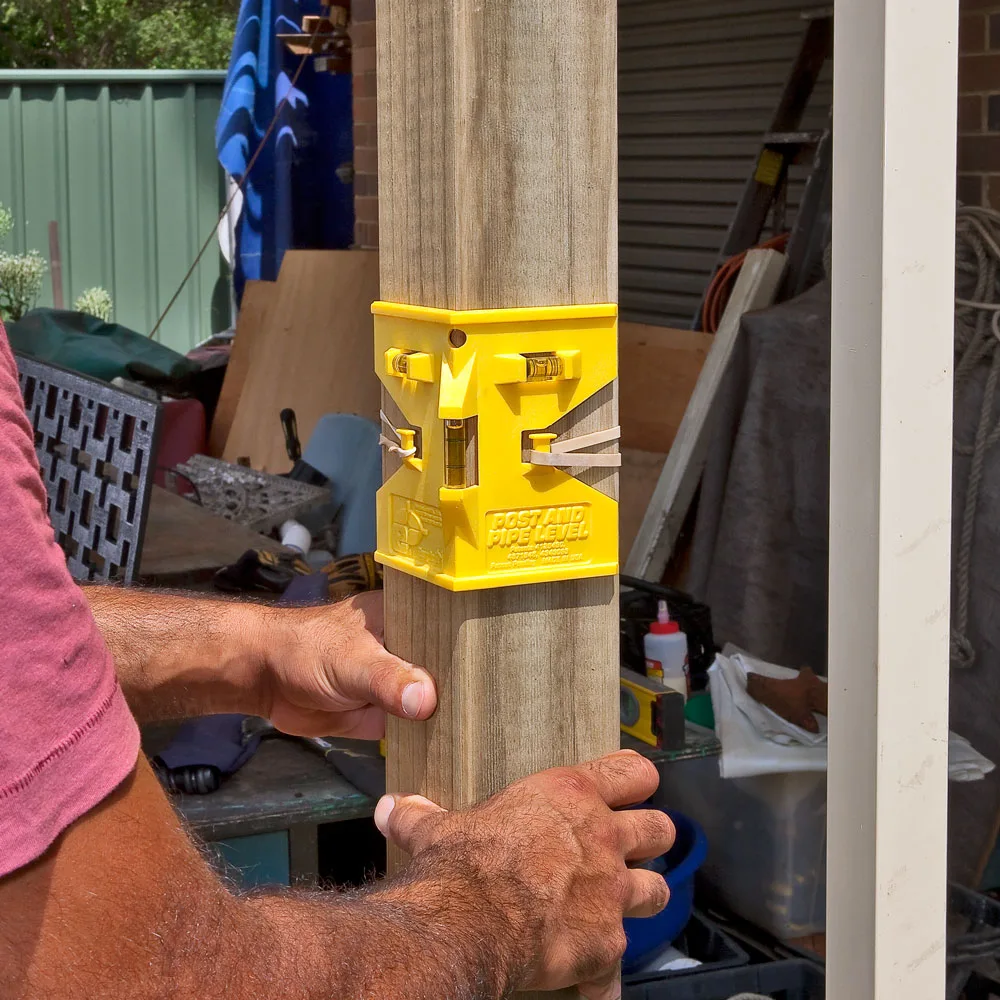
Step 3
From outside of 1 end post, measure in width of panel (here, 1205mm) and mark with set-out paint. This will be centre of next post. From there, mark every panel width for centres of remaining posts. Dig 500mm-deep holes at these marks.
Step 4
Run a taut stringline between end posts at top and at bottom. Place a 10mm packer between post and stringlines at each end. Place remaining posts into holes. Using a packer as a guide, position other posts so they are 10mm from stringlines at top and bottom. (This gap prevents 1 of the posts from fouling the line and sending your screen off course.) Ensure posts are plumb, then add concrete and leave to set as in Step 2.
Step 5
From ground level of 1 end post, measure up height of panel (here, 2450mm) and mark. Transfer this level on all other posts, then use power saw to cut tops off posts at these marks, if needed.
Step 6
Cut rails to fit between posts at top and bottom. Make top rails flush with top of posts. Then measure down posts length of panel for position of underside of bottom rails. Using a nail gun, skew nail rails in place. Paint posts and rails. Let dry.

Step 7
Clamp 1 panel to 1 end post so it is flush with post at top and side. Countersink and screw panels to posts and rails. Repeat for all other panels, ensuring they are aligned.
How high can I build a privacy screen?
Garden privacy screens can typically be up to 2.5 metres high but there may be different regulations depending on where you are in Australia.
For example, in NSW, you can build a screen that’s no higher than 2.5 metres above the existing ground level as long as it’s also 900mm from the boundary. There are similar requirements in Victoria. This means you couldn’t install the screen on a boundary fence or wall.
If you have any doubts, contact your local council or state government for details specific to your area. You could also consider talking to your neighbours to see if you can all come up with a solution everyone’s happy with.
